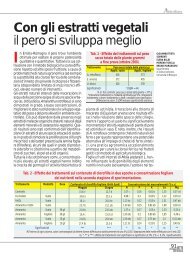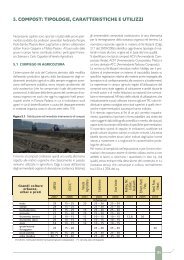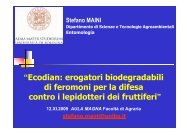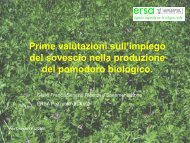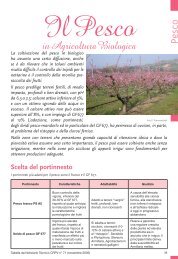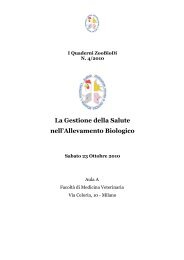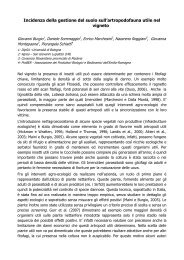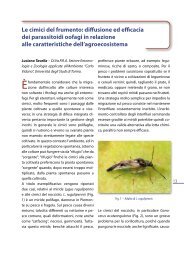You also want an ePaper? Increase the reach of your titles
YUMPU automatically turns print PDFs into web optimized ePapers that Google loves.
Petria 20 (1), 1-72 (2010) – Atti Convegno - Ancona, 26 Febbraio/February 2010Infine i convegni svolti per la presentazione dei risultati parziali di sperimentazionerappresentano la prima via di comunicazione alle aziende, nelle aziende. Si sonoproposti anche momenti di confronto presso i centri della produzione per fare leprime valutazioni sull’impiego del rame a dosi ridotte, oggi in viticoltura a 6 kg/haannui, dopo l’emanazione del Regolamento 473/2002/CE che ha portato correzioniagli allegati I, II e IV del Regolamento 2092/91/CE. La necessità di ottimizzare ledosi, con composti sempre più efficienti e mirati nella loro composizione chimicae stechiometrica rende la ricerca particolarmente interessante per i viticoltori chevedono nel rame il futuro della lotta alla peronospora.Nel corso delle valutazioni in azienda e dei colloqui con i viticoltori sono inoltreemerse nuove conoscenze a cui sarebbe interessante dar seguito come ad esempio lavalutazione degli effetti tossici del rame residuale sulla biosfera e le diverse interazionicon i microrganismi in ambienti biologici. Poter valutare in futuro la riduzione deidosaggi e l’ottimizzazione della distribuzione del rame anche in funzione di un minorimpatto tossicologico sui sistemi agrari potrebbe considerarsi una buona frontiera daraggiungere per la viticoltura in generale ma soprattutto per quella biologica.Parole chiave: Agricoltura biologica, Difesa biologica, Trattamenti cuprici, Vite.The role and strategies of AMAB within the project “Rame Marche”The use of copper in viticulture, and in particular with organic viticulture, hasa long tradition. Even nowadays this metal is commonly used because of its benefitsin the control of several grapevine diseases. Due to its mechanism of action, copper isa contact fungicide with a broad spectrum, and it is particularly useful in the controlof Plasmopara viticola. For organic agriculture, the use of copper compounds is thebasis of the defence of crops, and should the rate of copper use allowed be furtherreduced to below the quantities fixed by Regulation (EC) 473/2002, a lot of cropscould not be grown organically anymore.For these reasons, over these years, the Marche Association for BiologicalAgriculture (Associazione Marchigiana per l’Agricoltura Biologica, AMAB), whichis made up of organic farmers, has cooperated as a project partner in a study carriedout on organic farms. This study has investigated new methodologies based on the useof low-copper-rate formulations and the effects of different environmental, seasonaland genetic factors. Interestingly, some compounds have shown good results whenused at low rates, because of their chemical and physical properties.The role of the AMAB within the project was to provide technical assistancefor farmers, to spread the experimental results through common communicationchannels, and to plan new studies and research strategies for the use of copper inorganic agriculture. The technical assistance in the field allowed the sites to be chosenin collaboration with the researchers, where the study could be conducted accordingto the defence strategies concerning the evaluation of environmental factors (i.e.40



